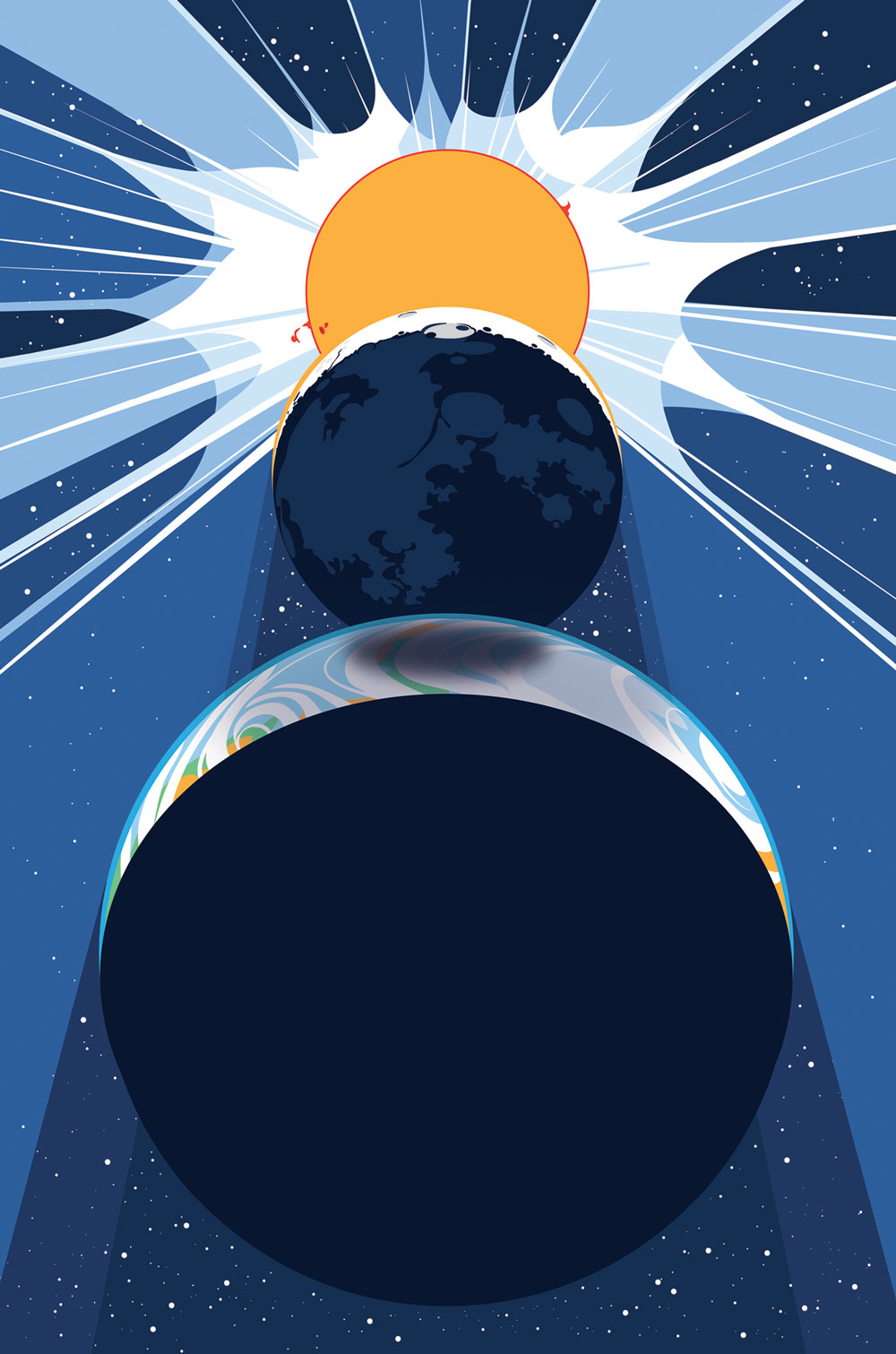Eclipse 2017: Darkness Is Coming
Posted on Categories Discover Magazine

Over time, these cycles of bounty and absence come and go, and every place on Earth is crossed eventually. For human beings, with our limited lives and limited means of travel, these vagaries of celestial alignment mean the majority of people on Earth have never seen a total solar eclipse.
The Daytime Stars
The first total solar eclipse most Americans will have ever seen begins the morning of Monday, Aug. 21, 2017, two seconds before 10:16 a.m. PDT. At that moment, the dark shadow of the moon touches the Paciific Coast at the Yaquina Head lighthouse outside the coastal town of Newport, Ore. There is no doubt about this. Astronomers have a bad reputation for predicting amazing sights for the public. Too many “Comets of the Century” turn into faint fuzzy duds that disappoint in the darkness. Too many meteor “storms” wind up being no more than a drizzle once you’ve woken the family at 2 a.m. But this eclipse is happening, in the middle of the day, exactly on time, and in exactly the places that are predicted. It’s as certain as the sunrise.
The only question is a matter of clouds, and even those can be forecast with some certainty. The region with the best chance of clear skies all along the path of totality on that date is eastern Oregon, which the moon’s shadow reaches at 10:19 a.m. and 36 seconds PDT as it crosses the Cascade Range and lies eastward at a speed of 2,265 mph.
At 2:47 EDT, one hour and 33 minutes after coming ashore on the Paciifc Coast, the moon’s shadow crosses out into the Atlantic just north of Charleston, S.C. In that time it will have touched 13 states, five state capitals, and 9.7 million residents, not counting the millions who will travel into the path to see it. Totality — when the sun is completely blocked by the moon — will take only 93 minutes to cross from sea to shining sea.
But not all views are equal.
Although all of North America will witness at least a partial eclipse, the real show is within the zone of total darkness. You must get into the umbra, the darkest part of the moon’s shadow where the disk of the sun is completely covered. That is where the eclipse is total.
Those in totality’s path see Baily’s beads, when sunlight shines through lunar mountains, sometimes making the eclipsed sun look like a diamond ring. Totality also makes it possible to see the sun’s corona, or outer atmosphere, and any prominences extending from our star’s edge. Day becomes night and the brighter stars and planets, such as Venus and Mars, become visible near noon. You will understand the true meaning of awe. But the difference between being inside and outside the path of totality is the literal difference between day and night.